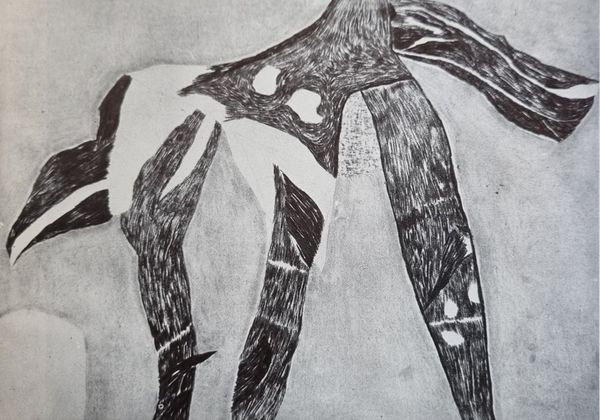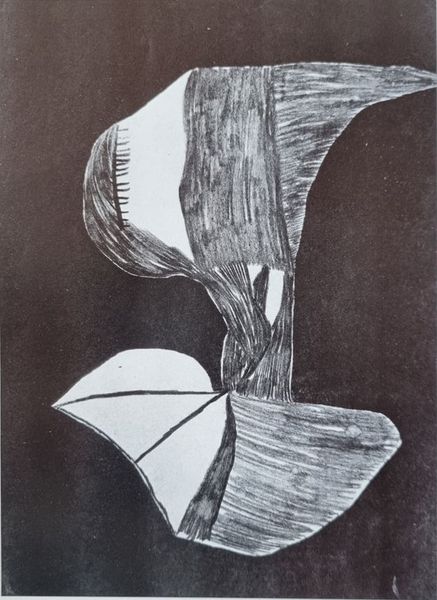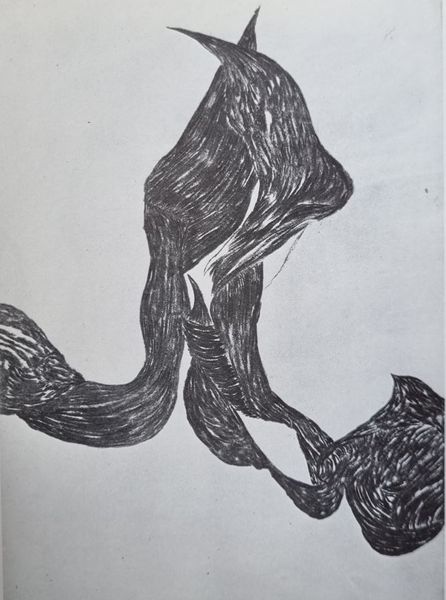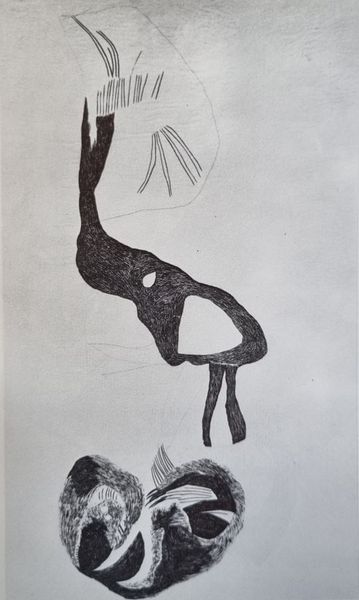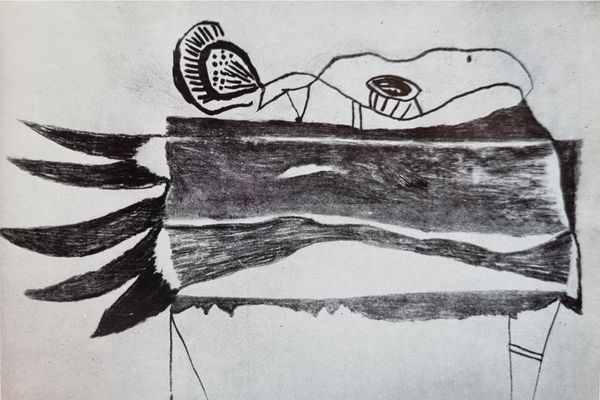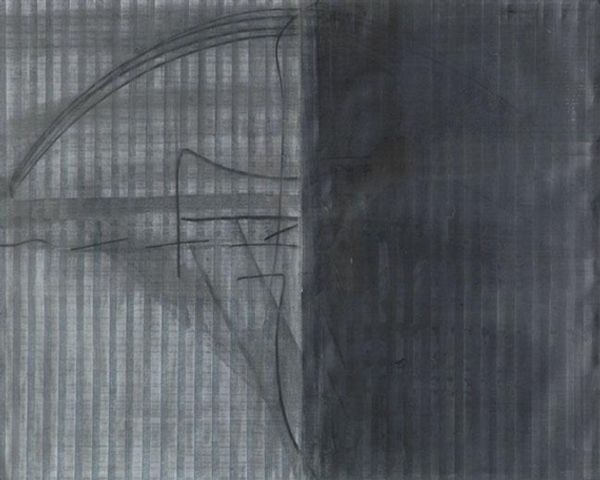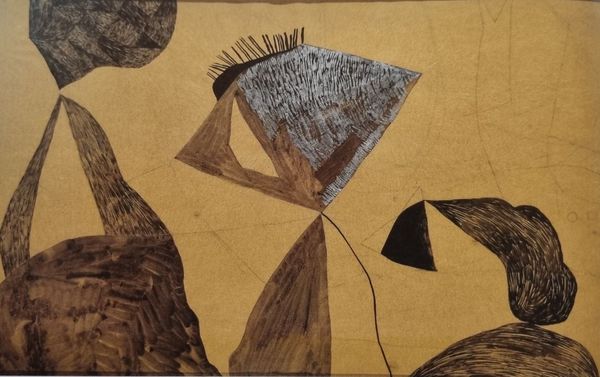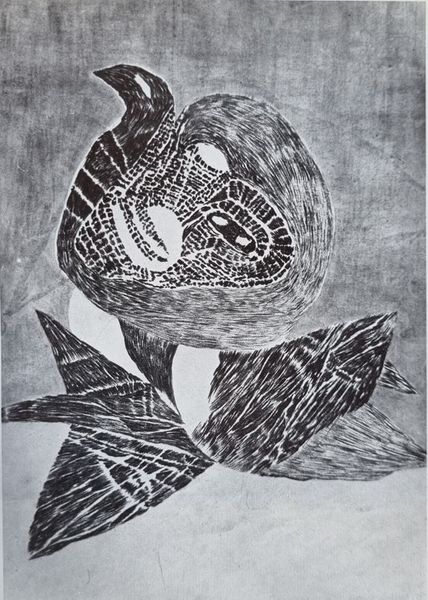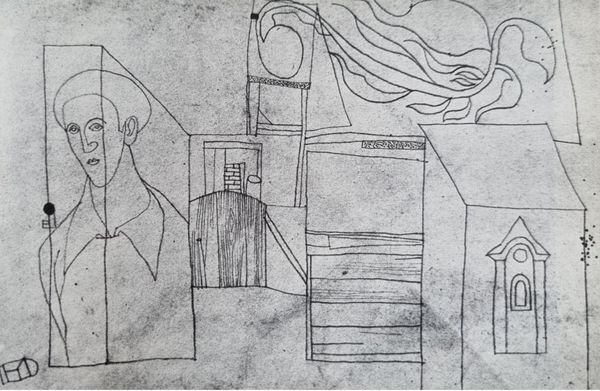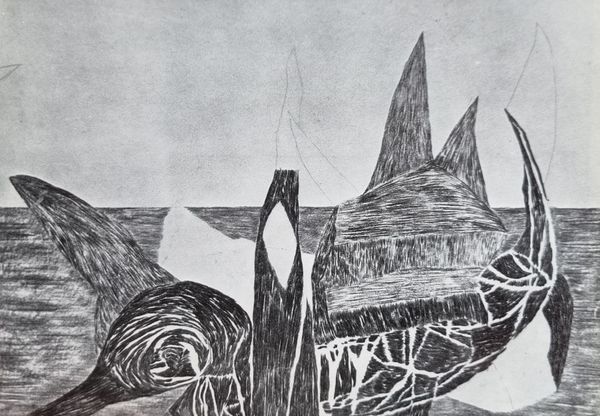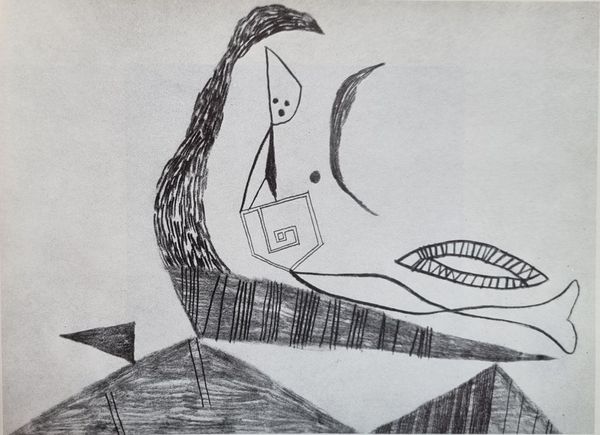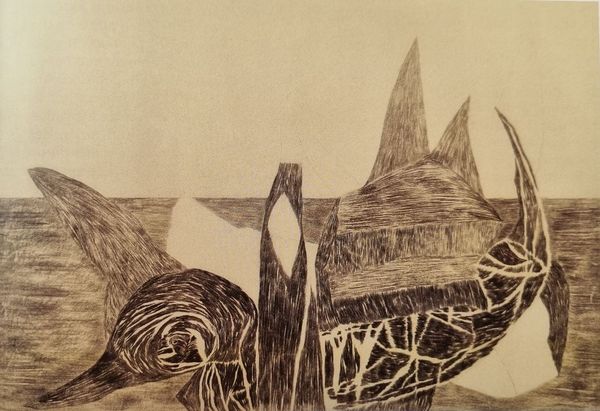
Copyright: Public domain
Curator: This drawing, created with graphite on paper, is entitled *Vajda Lajos Falevelet Tartó 1939*, placing it firmly in a turbulent pre-war period. It's attributed to the Hungarian artist Vajda Lajos. Editor: My first impression is of something quite unsettling. The contrast between the heavily worked areas and the stark white space creates a palpable tension. What am I even looking at? Some sort of strange, anatomical abstraction? Curator: It invites interpretation. The image evokes both organic forms—almost landscape elements, maybe hills or riverbeds—and suggests fragmented figuration, the titular 'leaf holder'. See how these natural and constructed realms intertwine. Notice the swirling, almost topographical markings, recurring imagery suggesting a hidden language within Vajda’s symbolic repertoire. Editor: Yes, these linear markings definitely stand out! Looking closer, the materiality, specifically that smudging, gives a sense of movement. But how was it achieved? I want to consider the physicality of the artist's hand. There’s something almost frenetic about the mark-making here—it speaks to the conditions, and that might be its most profound language. Was this about efficient output or a cathartic experience, do you think? Curator: I sense a synthesis, or even struggle, of these forces at play. I consider Vajda's own Jewish identity in wartime Hungary and what it means to translate private struggle into collective visual metaphor, considering memory, exile and place... perhaps there is some resistance in such synthesis. Editor: Perhaps you're correct. Thinking more about the labor, one wonders how he accessed these materials during the conflict, the scarcity of even graphite...it re-frames the drawing as an act of resistance and personal declaration of independence within restrictions. It elevates an every day object into the sublime! Curator: Precisely! These materials connect to not just art, but social-historical realms. Lajos used these 'falevelet tartó' drawings to perhaps evoke what could no longer be vocalized with literal representation alone... symbols carrying the invisible. Editor: Thank you! Considering the process gives the image, for me, a whole new charge and allows us to understand the context behind these graphic interventions. Curator: It’s a testament to the layered nature of the artist's practice, interweaving organic forms with societal undertones.
Comments
No comments
Be the first to comment and join the conversation on the ultimate creative platform.
